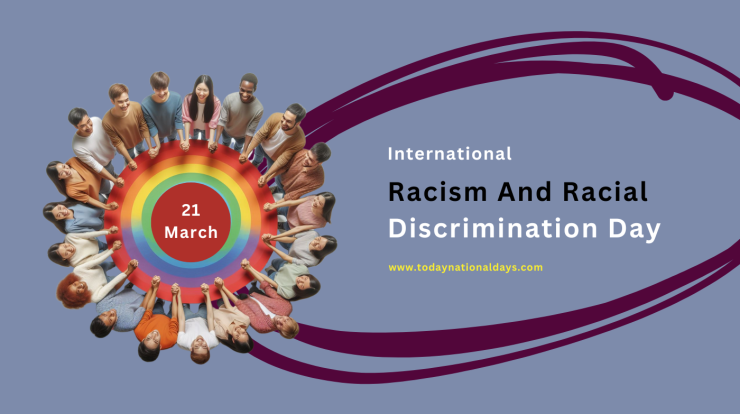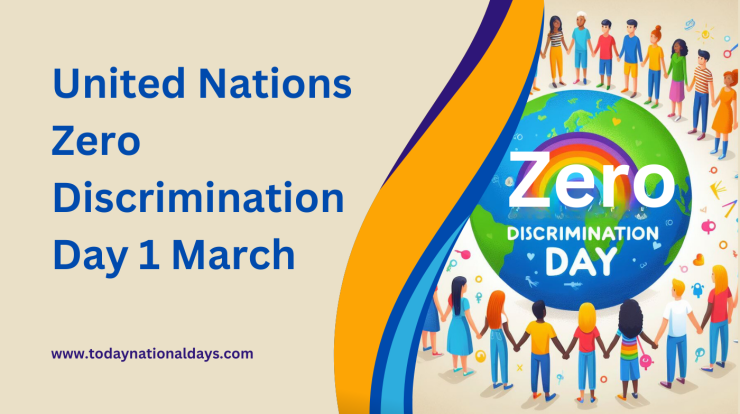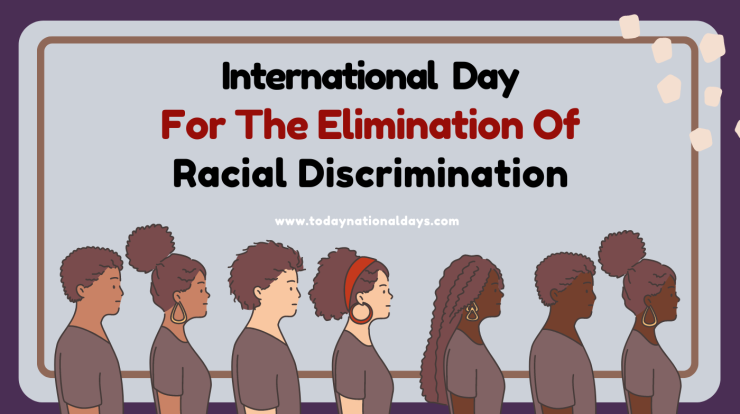
World Wetlands Day 2 February, marks the adoption of the Convention on Wetlands and raises awareness about the alarming decline of wetlands worldwide. Wetlands stand out as unique ecosystems characterized by their regular or seasonal inundation with water.
Wetlands encompass diverse habitats such as swamps, lagoons, coral reefs, and salt marshes. What distinguishes wetlands is their rich vegetation, predominantly aquatic plants, which sets them apart from other landscapes and bodies of water.
Wetlands provide essential support for both aquatic and terrestrial wildlife. Remarkably, these vital ecosystems are found on every continent except Antarctica.
World Wetlands Day 2 February Theme
Hey, nature enthusiasts! Mark your calendars for February 2nd because it’s World Wetlands Day. This year’s theme is Wetlands and Human Wellbeing, shining a spotlight on how wetlands are like superheroes, quietly supporting our well-being in so many ways.
With Wetlands and Human Wellbeing in focus, World Wetlands 2 February Day is sounding the alarm! It’s time for individuals, communities, and governments worldwide to step up and recognize just how crucial wetlands are. Together, let’s take bold actions to protect these vital ecosystems for the present and future generations. Let’s make a difference!
What Is A Wetland
Ever wondered what makes a wetland so special? Well, it’s more than just a patch of water! A wetland is like its own little world, flooded or soaked with water all year round or during certain times. These places are unique, standing out from the solid ground and the deep blue sea.
Wetlands are like nature’s in-betweeners. They have their own vibe and special features that set them apart. So, next time you stumble upon one, take a moment to appreciate the magic of these distinct ecosystems!
Types Of Wetlands
- Marshes: These places are all about the greenery, with herbaceous plants like reeds and grasses taking center stage. It’s like nature’s own garden party!
- Swamps: Picture this—woody plants, like trees and shrubs, ruling the scene. Swamps are like the forest’s laid-back cousin, with a chill vibe.
- Bogs: Have you ever heard of a peat bog? These acidic wetlands are low on the nutrient scale but high on the intrigue factor. It’s like stepping into a whole other world!
- Fens: Now, fens are similar to bogs but with a bit more zest. They’re also peat-forming wetlands but with more nutrients in the mix. Think of them as Bogs’ livelier cousins!
- Estuaries: Here’s where freshwater and saltwater come together for a unique ecosystem mash-up. It’s like two worlds colliding in the best possible way, creating a haven for all sorts of aquatic life.
Importance Of Wetlands
- Water purification: Think of wetlands as nature’s water filter. They’re experts at removing pollutants and nasties from water, leaving it fresh and clean for us to enjoy.
- Flood control: Wetlands are like nature’s sponges, soaking up excess water during heavy rains and storms. This helps prevent floods and keeps our communities safe and dry.
- Climate change mitigation: Did you know wetlands are superheroes in the fight against climate change? They act as carbon sinks, slurping up carbon dioxide and helping to reduce greenhouse gas emissions. Pretty neat.
- Biodiversity hotspots: Wetlands are buzzing hubs of life, providing homes for all sorts of plants and critters. From colorful birds to tiny insects, they’re like a bustling metropolis for Mother Nature’s finest.
- Economic benefits: Wetlands aren’t just pretty to look at—they’re also big players in the economy. They support industries like tourism, fisheries, and agriculture, providing jobs and opportunities for folks worldwide.
- Cultural significance: Let’s remember the cultural and spiritual side of wetlands. For many communities, these watery wonderlands hold deep meaning and importance woven into their traditions and beliefs.
Threats To Wetlands
- Pollution: Imagine runoff from farms, factories, and cities entering wetlands, bringing along all sorts of nasty stuff. It’s like dumping trash in your backyard. It messes with the ecosystem and harms the critters that call it home.
- Habitat destruction: Have you ever heard the saying “paving paradise to put up a parking lot”? Well, that’s what happens when we drain, dredge, and fill wetlands for development. We’re bulldozing nature’s homes, leaving plants and animals without a place to live.
- Climate change: Ah, the big one. With rising sea levels, wonky weather patterns, and rising temperatures, wetlands are literally feeling the heat. They’re under attack from all sides, making it tough to thrive and survive.
Wetlands And The SDGs
Wetlands are essential for accomplishing numerous Sustainable Development Goals (SDGs).
- Goal 6 ensures everyone can access clean water and proper sanitation, focusing on protecting and restoring water-related ecosystems (target 6.6).
- Then there’s Goal 14, which focuses on preserving our oceans, seas, and marine life. One of its targets (14.2) promotes the sustainable management and safeguarding of marine and coastal ecosystems.
- And let’s not forget Goal 15, which tackles the preservation of life on land. Target 15.1 underlines the importance of conserving, restoring, and sustainably using our terrestrial and inland freshwater ecosystems and the benefits they provide.
History Of World Wetlands Day 2 February

The UN General Assembly made a significant declaration on August 30, 2021, marking February 2 as World Wetlands Day. This observance highlights the critical need to halt the rapid decline of wetlands and promote their conservation and restoration efforts.
February 2 holds special significance as it commemorates the adoption of the “Convention on Wetlands of International Importance” back in 1971 in Ramsar, Iran, situated on the shores of the Caspian Sea.
The Ramsar Convention, embraced by 172 countries, is a pivotal tool in safeguarding and responsibly managing wetlands. It achieves this through the establishment of protected areas, the implementation of effective policies, and the sharing of expertise.
As part of their commitment to the Convention, each country must nominate at least one wetland for inclusion in the List of Wetlands of International Importance, commonly called Ramsar sites.
Ramsar Convention
The Ramsar Convention is a global treaty, also known as the Ramsar Convention on Wetlands of International Importance, Especially as Waterfowl Habitat. It serves as a blueprint for national and international efforts to conserve and responsibly manage wetlands and their resources.
Background
- Adoption Date: February 2, 1971, in Ramsar, Iran.
- Effective Date: December 21, 1975.
- Signatories: 172 countries have signed the Ramsar Convention as of October 26, 2023.
Objectives Of The Ramsar Convention
- Preventing Global Wetland Loss: One of the primary aims of the Ramsar Convention is to halt the ongoing loss of wetlands across the globe and advocate for their conservation.
- Encouraging Responsible Wetland Use: Another key goal is to promote the sustainable and wise utilization of wetlands and their resources, ensuring long-term health and productivity.
- International Collaboration: The convention fosters international cooperation among countries in wetland conservation and management. It emphasizes the importance of collective action to address global environmental challenges.
Key Features Of The Ramsar Convention
Site Designation: Countries select wetlands to be listed on the Ramsar List, considering their ecological, biological, cultural, or hydrological importance.
Wise Use Principle: This principle advocates for using wetlands in a manner that guarantees their long-term sustainability, benefiting both humans and nature.
International Cooperation: Countries are urged to collaborate and share knowledge, expertise, and resources to conserve wetlands.
Benefits Of The Ramsar Convention
Wetland Conservation: Offers a worldwide strategy for safeguarding and responsibly utilizing wetlands.
Biodiversity Preservation: Safeguards vital habitats for diverse plant and animal species.
Water Resource Administration: Assists in regulating water reserves and managing flood occurrences.
Climate Change Mitigation: Wetlands contribute to carbon dioxide storage and reduce greenhouse gas emissions.
Economic Advantages: Wetlands foster tourism, fisheries, and various economic ventures.
How To Celebrate World Wetlands Day?
- Indulge in the bliss of a serene family picnic beside a tranquil lake or meandering river.
- Embark on a kayak adventure to explore the waterway.
- Coordinate a community walk, bike ride, or run around wetlands.
- Participate in a guided walk led by a wetland expert to learn about plants or birds.
- Attend a workshop or talk, such as one on flax weaving.
Challenges
Wetland Loss and Degradation: Human activities like agriculture, pollution, and infrastructure development continue to cause wetland loss and degradation.
Climate Change: Wetlands face a serious threat from climate change, including rising sea levels and altered precipitation patterns.
Resource Constraints: Numerous countries need more financial and technical resources to execute the Ramsar Convention properly. The Ramsar Convention is crucial for safeguarding and preserving wetlands globally.
It establishes a platform for international collaboration and proactive measures.The convention ensures the responsible and sustainable utilization of wetlands, benefiting current and future generations.
Significance Of World Wetlands Day
Spotlighting Wetland Benefits: The day emphasizes the varied advantages that wetlands offer humans, including flood management, water purification, climate resilience, and biodiversity support.
Advocating Wetland Conservation: This day urges individuals to actively participate in conserving and responsibly utilizing wetlands actively, ensuring their endurance for future generations.
Raising Awareness on Wetland Threats: The day seeks to increase awareness about the perils facing wetlands, such as pollution, unsustainable land practices, and climate shifts.
Urging Action Against Wetland Threats: It motivates individuals, communities, and governments to take tangible steps to combat wetland hazards and foster their preservation.
2nd February Special Day
February 2nd is World Wetlands Day, honoring the signing of the Ramsar Convention on Wetlands in 1971. This unique occasion acts as a worldwide stage to raise awareness about the essential role of wetlands in enhancing human welfare and conserving the environment.
It reminds us of our shared duty to safeguard these critical ecosystems for the well-being of current and future generations.
Who Is Behind World Wetlands Day?
The Secretariat of the Convention on Wetlands coordinates the awareness campaign for World Wetlands Day. Since its inception in 1997, the Contracting Parties of the Convention on Wetlands have been commemorating World Wetlands Day.
Who Can Join?
World Wetlands Day welcomes participation from everyone, including international organizations, governments, wetland experts, children, youth, media, community organizations, decision-makers, and individuals alike. These ecosystems hold significance for us all.
Conclusion Of World Wetlands Day
As we mark World Wetlands Day on 2 February, the world focuses on the crucial need for wetland preservation. This yearly event highlights the importance of these ecosystems for biodiversity, water regulation, and climate resilience.
FAQs
What Is The Message Of The World Wetlands Day?
Protecting our wetlands is vital for the future of our planet. These ecosystems play a crucial role in supporting life on Earth, making it imperative that we prioritize their conservation.
What Is The Primary Purpose Of World Wetlands Day, Celebrated On February 2nd Each Year?
World Wetlands Day, observed every February 2nd, honours the creation of the Convention on Wetlands and raises awareness about the global decline of wetlands. These ecosystems, prone to periodic or permanent flooding, are essential and distinctive.
What International Day Is On February 2?
February 2nd marks World Wetlands Day, celebrating the adoption of the Convention on Wetlands in Ramsar, Iran, on the same date in 1971. Since its inception in 1997, this day has highlighted the importance of wetlands, with the 2020 theme centered around ‘Wetlands and Biodiversity.
Why Is It Important To Protect The Wetlands?
Wetlands play a crucial role in protecting against floods, enhancing water quality, controlling shoreline erosion, providing natural resources, offering recreational opportunities, and adding to the beauty of landscapes.
Who Is Behind World Wetlands Day?
The Secretariat of the Convention on Wetlands coordinates the World Wetlands Day awareness campaign. Since its inception in 1997, Contracting Parties of the Convention on Wetlands have been observing World Wetlands Day.






